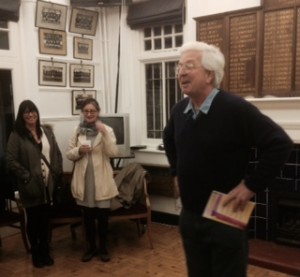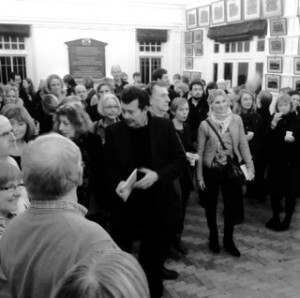Nick Luxmoore shares some pictures and stories from the launch event for his new book ‘School Counsellors Working with Young People and Staff’, and gives us an insight into why it is so important for counsellors to immerse themselves fully in school life.
 Can you explain a little bit about what first prompted you to write about the school counsellor’s role in the whole life of the school?
Can you explain a little bit about what first prompted you to write about the school counsellor’s role in the whole life of the school?
The work that counsellors do in schools with individual students is great. But the prevailing culture those students experience in school – five days a week – is at least as therapeutic or anti-therapeutic as their individual sessions with a counsellor. Counsellors must therefore try to affect that culture and, to do that, they need to involve themselves in school life beyond the confines of the counselling room. To do that, they need to be confident about boundaries, able to manage both formal and informal relationships. Counselling should never be a furtive or shameful activity. Counsellors need to be out and about, therefore, talking to all sorts of people, most of whom will never use the counselling service themselves but will happily recommend it to others as long as it’s not presented to them as mysterious or weird.
 Are people often surprised when they realise staff can seek support from school counsellors as well as students?
Are people often surprised when they realise staff can seek support from school counsellors as well as students?
Not all school counsellors see staff. Some schools don’t allow it and some counsellors choose not to see staff, believing that there’s a conflict of roles. I disagree with this. In their own ways, members of staff are just as needy as students; potentially, their behaviour is just as disruptive and they affect the prevailing culture in classrooms and corridors just as powerfully as students. Counsellors have to make the processes of counselling as normal as possible, getting rid of any shame and, in the long run, helping everyone to feel more confident about supporting each other. It’s much harder to do this if counselling is only for students because it implies that grown-up people never feel angry or sad, disillusioned or vulnerable. It implies that counselling is just for wimps.
 It looks like you had quite a crowd in attendance at the launch – what was it like organising the event?
It looks like you had quite a crowd in attendance at the launch – what was it like organising the event?
Organising a book launch is a military operation! I spend a ridiculous amount of time beforehand worrying about whether there’s enough booze, whether people will like the food we’ve made and whether they’ll come! Exactly 100 people came to this event, including old friends from teaching, headteachers, lots of the counsellors I’ve supervised and worked with over the years and some of my current team of Peer Supporters. They’re Year 13 students who support younger students in the school. Halfway through, I made a speech, explaining why I think the book matters and hopefully whetting people’s appetites to read it.

 A couple of the pictures show you reading from the book during the launch – can you tell us which section you read and what in particular made you choose it?
A couple of the pictures show you reading from the book during the launch – can you tell us which section you read and what in particular made you choose it?
I’m reading from the beginning of the second chapter, called ‘The Idea of a Counsellor’. It’s about a counsellor starting work in a school and the very mixed feelings that the school will have towards her. I chose it because it’s about the way counselling provokes both hope and fear in a school, with counsellors idealized and demonized. In the extract, the counsellor talks with apparently enthusiastic staff who are testing her out and tries to make a relationship with her first, impossibly difficult client. I imagined that a lot of people would recognize themselves in the story!